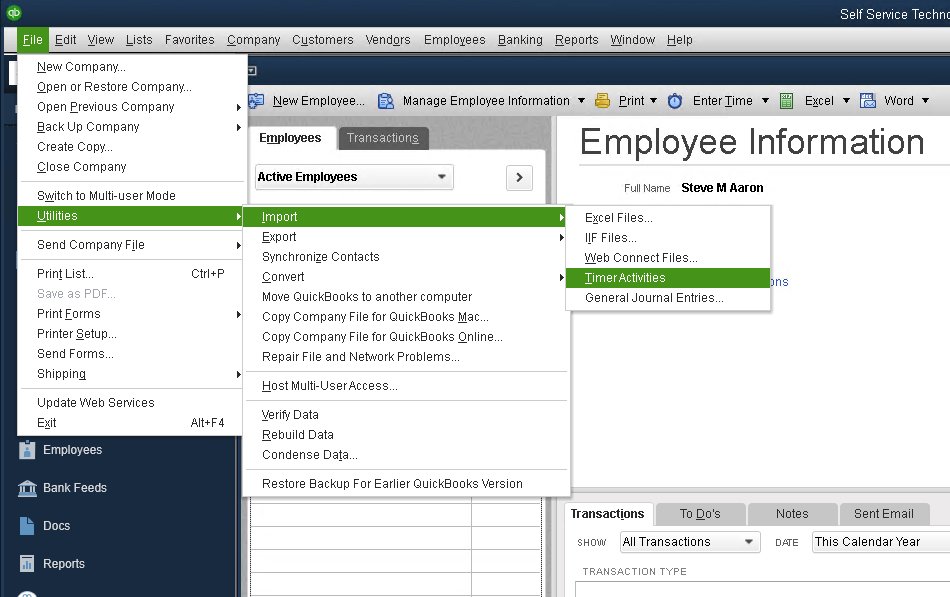

I've also created a similar app for handling complex billings that deal with changing variables (or differing variables on a customer by customer basis) that are beyond Quickbooks' ability to handle. And it works very well when everything has been set up correctly. The whole process is a lot easier than I've described, I think. In cases where this will be used in an ongoing basis I usually create a macro to automatically copy this sheet to a new book, then save that new book as a tab delimited text file, ready for import into Quickbooks. Once the formulas are in place they're just copied down as many rows as needed to handle all of the check data.
IMPORT DATA INTO QUICKBOOKS FROM CSC DOWNLOAD
BMO provides download options for QuickBooks, Quicken, Simply Accounting. The ACCNT number, AMOUNT, and MEMO fields on the SPL rows are INDEX formulas that pull the data from the check data table.Īgain, DOCNUM and NAME are needed in the example. To help manage the size of your data file, we recommend you download and save. The SPL and TRNS labels you see in the leftmost column are actually formulas, which return TRNS, SPL, or ENDTRNS depending on what split line has been taken care of.

The TRNS line AMOUNT field would consist of a formula that would "know" how many rows to include in calculating the check total (or just lookup the check total from the check data table), through the use of INDEX formulas getting column and row information from other formulas not shown here. In Excel, formulas would handle a lot of this, and would decide how many split rows exist per check. Forgot to include them in the above example! I would also include a couple of other fields on the SPL lines: DOCNUM (for check number) and NAME for payee.


 0 kommentar(er)
0 kommentar(er)
